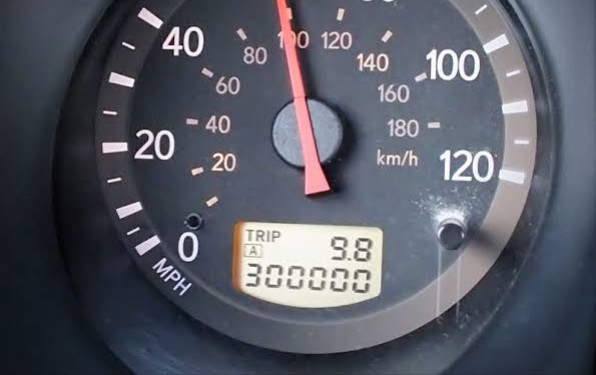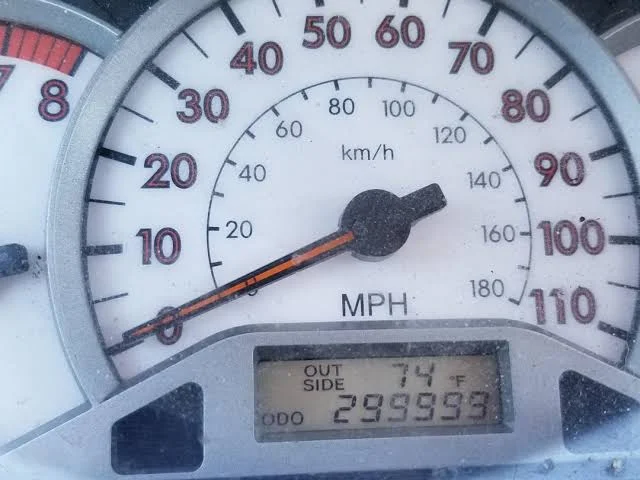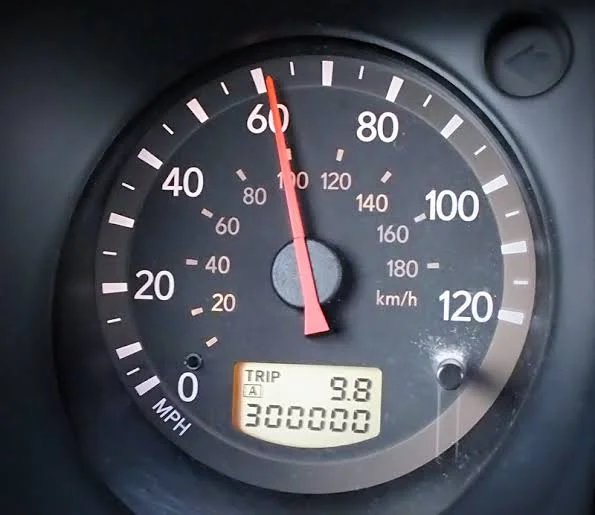The Honda Civic with 1.2 million miles on its odometer sits in a garage in Wisconsin, still purring like the day it rolled off the assembly line. Its owner, a retired mechanic named Joe LoCicero, follows one simple rule: "I know my car better than anyone else, and I treat it like family."
While most drivers consider 150,000 miles impressive, the reality is that with proper maintenance, reaching 300,000 miles isn't automotive wizardry, it's systematic care combined with mechanical common sense.
By 2024, Consumer Reports data shows the typical vehicle stays on the road for 12.6 years, with modern automobiles routinely reaching 150,000 to 200,000 miles. But here's the kicker: vehicles that receive consistent, methodical maintenance can stretch well beyond 300,000 miles without major mechanical failures. The secret isn't expensive parts or premium fuel. It's understanding that your car operates as an interconnected system where neglecting one component creates a domino effect of failures.
The Foundation
“I change my oil when the light comes on” sound familiar? This approach is automotive suicide. Modern engines with synthetic oil can handle 7,500 to 10,000mile intervals, but here's what the quick lube places won't tell you: oil degrades based on operating conditions, not just mileage.
The 300K Strategy:
- Follow your manufacturer's service schedule religiously, not the generic sticker recommendations
- Use the oil viscosity specified in your owner's manual, no exceptions
- For vehicles over 100,000 miles, consider high-mileage formulations that contain seal conditioners
- Monitor oil level monthly; consumption increases with age, and running low causes exponential wear
Critical Detail: If your car sits idle for extended periods, change oil based on time intervals. Oil breaks down from moisture and chemical reactions even without engine operation. The calendar matters as much as the odometer.
The Overlooked Lifeline
Your transmission contains precision components machined to tolerances measured in thousandths of inches. Old fluid becomes acidic, eating seals and clutch material. “I've driven 200,000 miles and never changed transmission fluid”, this statement usually precedes a $4,000 rebuild bill.
Service Intervals That Prevent Catastrophe:
- Automatic transmissions: 30,000 - 50,000 miles for fluid changes, not flushes
- Manual transmissions: 60,000 - 80,000 miles
- CVT transmissions: Follow manufacturer specifications exactly; these systems are particularly sensitive
Pro Insight: High mileage transmissions should receive gentle service. Avoid complete flushes if the fluid is severely degraded, fresh fluid can dislodge debris and cause immediate failure. Instead, perform multiple drain and fill services over several thousand miles.
Temperature Control Equals Longevity
Engine temperatures above 240°F cause aluminum components to warp and seals to fail. Your cooling system prevents this destruction, yet most drivers ignore it until steam billows from the hood.
The 300K Cooling Protocol:
- Replace coolant every 60,000 miles or five years, whichever comes first
- Use the exact coolant type specified, mixing formulations creates chemical reactions that corrode components
- Replace the thermostat whenever changing coolant; they're inexpensive and failure causes overheating
- Check radiator caps for proper pressure rating; a weak cap allows coolant to boil at lower temperatures
Warning Signs: White residue around cooling system components indicates electrolysis, chemical reactions that eat metal. This requires immediate attention and complete system flushing.
Beyond Pads and Rotors
Most drivers understand brake pad replacement but ignore brake fluid. This hydraulic fluid absorbs moisture, which lowers its boiling point and corrodes brake lines from the inside. "My brakes work fine" doesn't mean the system is healthy.
Complete Brake Maintenance:
- Replace brake fluid every 30,000 - 45,000 miles regardless of appearance
- Inspect brake lines annually for rust, particularly in salt exposure areas
- Replace rubber brake hoses every 100,000 miles; they deteriorate internally
- Service brake calipers when replacing pads, stuck pistons cause uneven wear
The Hidden Cost: Neglected brake fluid leads to ABS pump failures costing $1,500 - 2,500. A $150 fluid change prevents this expensive repair.
The Make or Break Maintenance
Timing belt failure destroys engines in interference designs. Even timing chain systems require maintenance as tensioners and guides wear out.
Critical Timing Maintenance:
- Timing belts: Replace every 60,000 - 100,000 miles with water pump, tensioners, and seals
- Timing chains: Replace tensioners and guides at 150,000 - 200,000 miles
- Interference engines: Never exceed recommended intervals, failure means complete engine replacement
Cost Reality Check: A $1,200 timing belt service prevents $6,000 - 12,000 engine replacement. The math is simple, but the consequences of neglect are severe.
The 300,000 Mile Maintenance Schedule
- 0 - 60,000 Miles: Establish patterns. Regular oil changes, tire rotations, and filter replacements. Document everything.
- 60,000 - 120,000 Miles: Major service interval. Transmission service, cooling system flush, brake fluid replacement, and suspension inspection.
- 120,000 - 200,000 Miles: Component replacement phase. Spark plugs, fuel injectors, suspension components, and drive belts.
- 200,000+ Miles: Preventive replacement. Replace components before failure rather than waiting for symptoms.
Driving Habits That Extend Life
Mechanical sympathy matters more than premium parts. Aggressive acceleration, hard braking, and ignoring warning signs accelerate wear exponentially.
High Mileage Driving Techniques:
- Warm engines gradually; avoid high RPM until operating temperature is reached
- Use engine braking on hills instead of riding brakes
- Address warning lights immediately, small problems become expensive quickly
- Park in shade when possible; heat accelerates rubber and plastic degradation
The 300K Mindset
Reaching 300,000 miles requires a fundamental shift in thinking. Your car isn't transportation, it's a mechanical partnership requiring consistent investment and attention. "I'll drive it until it dies" becomes “I'll maintain it so it never dies.”
The financial benefits are substantial. Consumer Reports calculates that vehicles driven to 200,000 miles provide the best ownership value, and extending to 300,000 miles creates even greater savings. The initial investment in quality maintenance pays dividends in reliability and resale value.
Remember: cars don't wear out from use, they deteriorate from neglect. Follow this maintenance master plan, and your vehicle won't just reach 300,000 miles; it'll arrive there running smoothly and ready for more.



Comments (0)
Please login to join the discussion
Be the first to comment on this article!
Share your thoughts and start the discussion